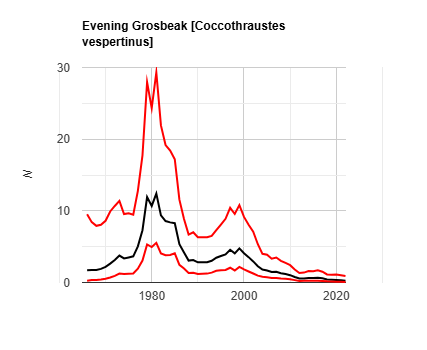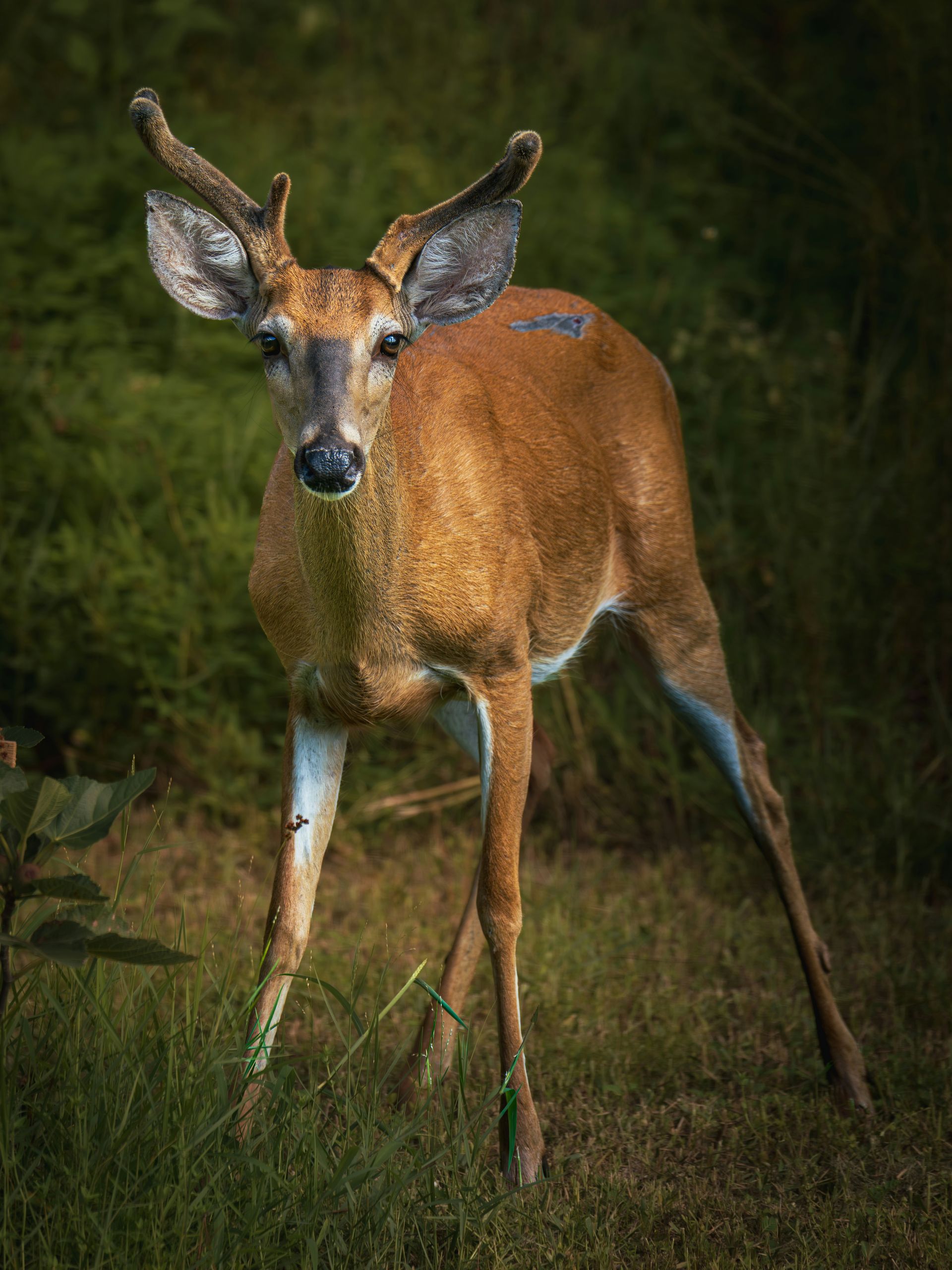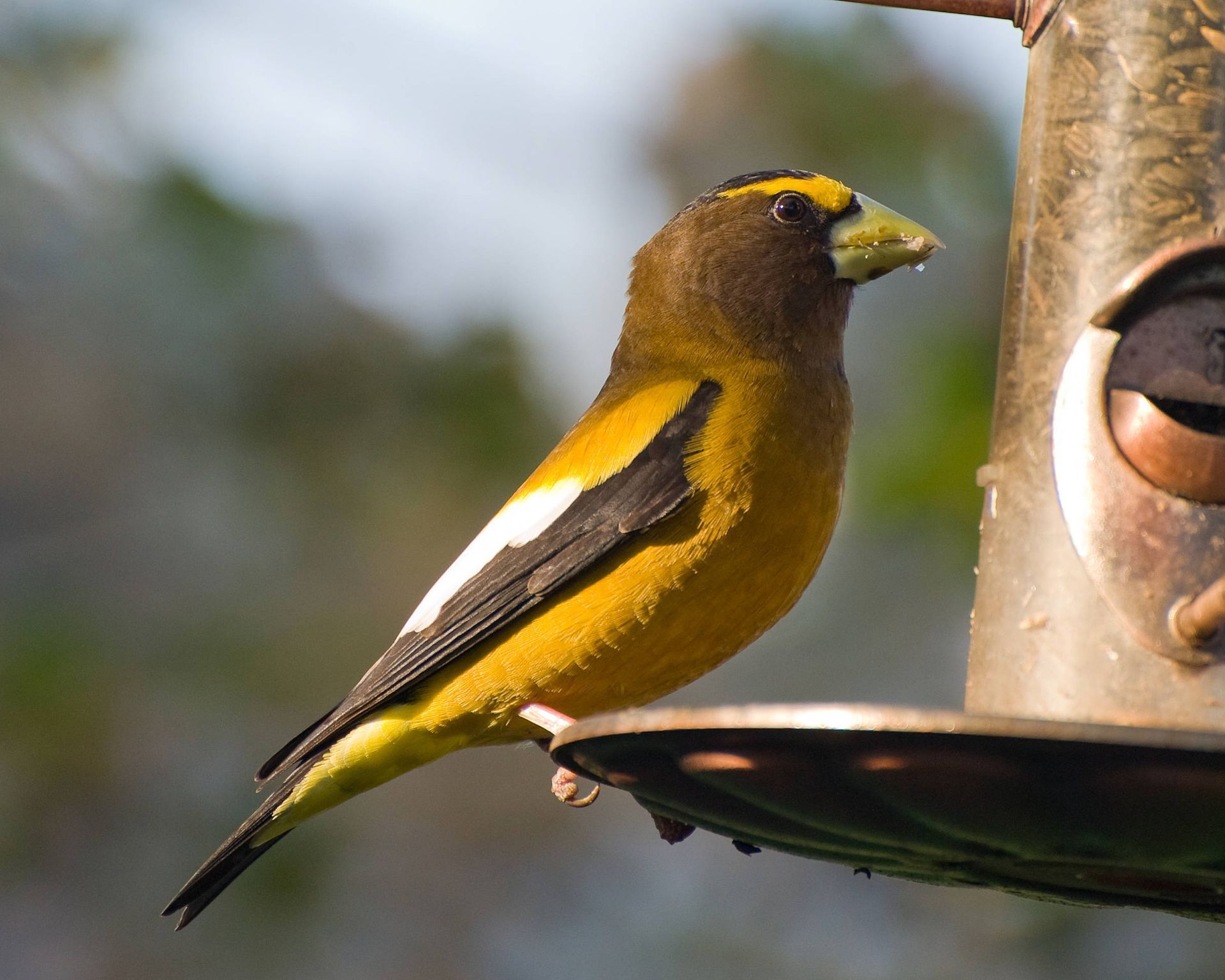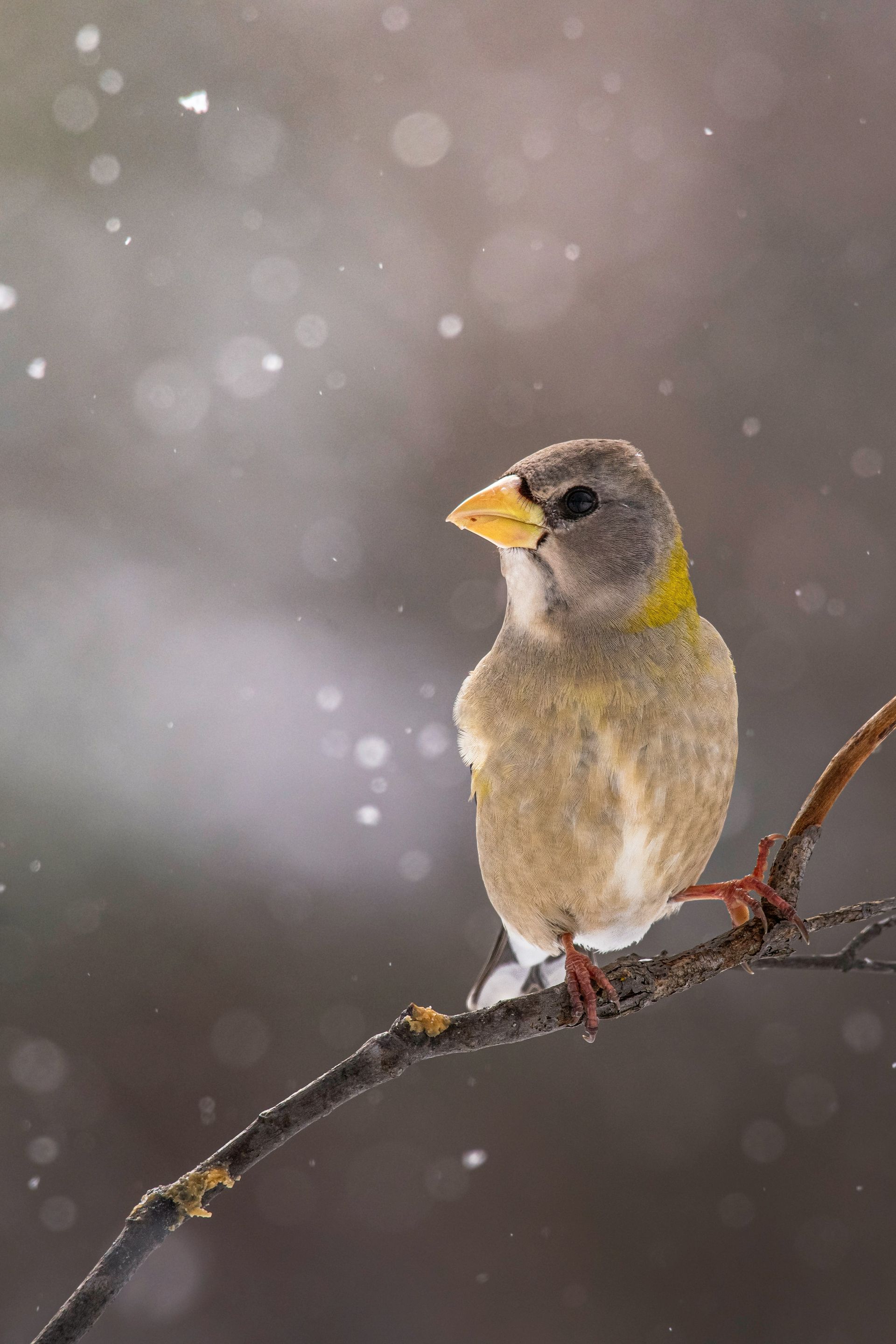Bold Color in Michigan Winters: Evening Grosbeak
If you are unaware, Michigan is currently partaking in a 125-year tradition known as the Audubon Christmas bird count or “side hunt”. Originally, the Christmas side hunt was a competition to see which hunters could get the most feathered and furred game, eventually sounding the alarm for conservationists. The resulting solution from the National Audubon Society was to transform this competition from harvest to census. The survey in general utilizes citizen science to gather data for making management decisions. The count takes place from December 14 to January 5, which also happens to be National Bird Day. In honor of these traditions, we wanted to highlight a Michigan bird classified by the Department of Natural Resources as threatened: the Evening Grosbeak (Coccothraustes vespertinus).
History
The Evening Grosbeak had historic range expansion for around 30 years until the 1990s as reported by MSU Extension. At this point, the range of the species experienced a decrease attributable to habitat loss and decline of food sources like the spruce budworm. This insect defoliates coniferous forests with outbreaks about every decade in which natural predators like the Evening Grosbeak can be beneficial to maintain the natural balance. Due to this shift in the availability of resources, the species was pushed north and can be found across Canada year-round. Portions of the natural range do coincide with the boundaries of the United States, namely Michigan's Upper Peninsula.

Conservation
The Evening Grosbeak is primarily found in the Upper Peninsula during winter. However, there are chances of seeing this spectacular species south of the typical range during an irruption where population density may displace individuals. This species is known to be on bird feeders offering sunflower seeds in the wintertime as this is the primary diet when other resources are limited. In the summer, this species plays an important role in maintaining ecosystem balance as their diet in the summer includes insects such as the pesky, but native, spruce budworm. When looking to conserve a species, biologists must identify the ecological role that the species plays as nature is constantly being balanced. If this species were to see another decline in population, we would likely see an increase in population of their food sources like the destructive spruce budworm.
Characteristics
This species has an identifiable heavy conical bill as with many other species of finch. Adult males are striking, yellow-bodied birds with a brighter yellow patch on their heads and black accents on their heads, wings, and tail feathers. Females and immature males are mostly gray with white and black accents on the wings and tail and a unique greenish-yellow tinge below the head. Both males and females in this species have a green-tinged bill throughout the breeding season and a whiter bill during winter. This bird tends to flock in the winter to aid in finding food, especially during an irruption caused by scarce food.
Male Evening Grosbeak on a bird feeder (left) courtesy of U.S. Fish and Wildlife Service and Female Evening Grosbeak perching on a branch (right) courtesy of Unsplash.
Current Status
The Michigan DNR has this bird listed as threatened in the state of Michigan, occasionally observed year-round in the upper peninsula and northern lower peninsula. The species can often be found in coniferous woods or high in the mountains along the northern border of the United States. The North American Breeding Bird Survey reveals a decrease in population for this species by about 74% between 1966 and 2022.
Get Involved
While this species has a variety in diet between seeds, berries, and insects, we must consider bird diets and their importance to the habitat. Birds are often the transportation beacons for many seeds to be translocated and spread, however this can benefit both native and invasive species. To help prevent the spread of problematic seeds, learn how to identify invasive vegetation and strategize how best to manage your own property. If you want to expand these efforts beyond your area, consider joining us at one of our On the Ground projects. Join us in the city of Portage on January 11th removing invasive woody vegetation like glossy buckthorn which can be spread by fruit-eating birds. Invasive species like this grow quickly and create shade preventing native vegetation growth and tree regeneration in valuable ecosystems. If you are unable to make this event, keep your eye on our website for upcoming invasive species removals!
Recent Posts





